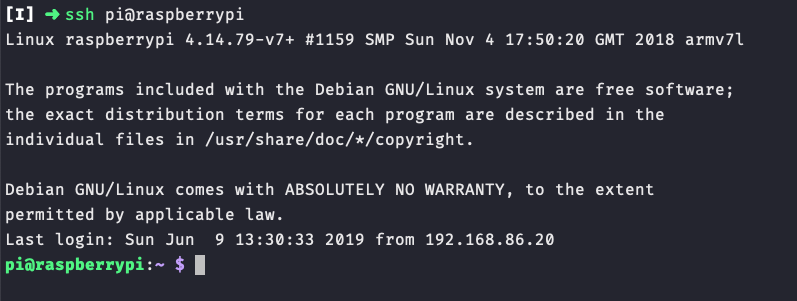
#MAC SSH SERVER HOW TO#
Subscribe to TechRepublic’s How To Make Tech Work on YouTube for all the latest tech advice for business pros from Jack Wallen. Save the file and you’re ready to SSH into those machines with commands like:Īnd that’s all there is to creating an SSH config file to be used on macOS. You could then create each host configuration entry (below that), leaving out the User option, like so: Where USERNAME is the user on the remote machines. You could configure that at the top of the config file with two simple lines: Let’s say you use the same account on all of your data center servers on the IP address scheme 192.168.1.x. In the users and groups sheet, enter a user or group name. Click the Allow connections from pop-up menu, then choose only some users. To set up key-based SSH, you must generate the keys the two computers will use to establish and validate the identity of each other.
#MAC SSH SERVER MAC OS X#
Select the desired service from the Custom Access list. The following outlines the process of setting up key-based SSH login on Mac OS X and Mac OS X Server. This makes it so much easier for you to remote into those servers from your Apple laptop or desktop. Choose which users can access your server using SSH. Just make sure, at a minimum, you include the Host and Hostname options.

You can create as many configurations in that file as you need (one for every server in your data center), each with different options. To SSH into our Nextcloud server, you’d only have to type the command: If you’re not using SSH KEY authentication (which you should), you’d need to remove the IdentityFile line. We’re also going to enable key authentication for the connection. We’re going to name this server “nextcloud” so we can easily remember how to Secure Shell into it. For example, say this is a Nextcloud server at IP address 192.168.1.20 and the username is vega. ssh-audit is a tool for ssh server auditing. In that directory, create the new file with the command: Once it opens, change into your user SSH directory with the command: With those at the ready, let’s make this happen. To tweak the sshd options, edit /etc/sshdconfig (you. This will run sshd at startup (through launchd) and enable SSH access with standard options. In System Preferences under Sharing, there is an option for Remote Login.
#MAC SSH SERVER WINDOWS#
If you are a Windows user, I would recommend using Mobaxterm application for doing this.
#MAC SSH SERVER INSTALL#
Yes, we do not have to install any other application for doing so, like we do in Windows. The only thing you’ll need is a MacBook or iMac that includes SSH and some remote servers to connect to. Go to System Preferences -> Sharing, enable Remote Login. If you want to setup SSH tunnel with your remote server using your Macbook, you can easily do so using the default Terminal application available in the Mac OS.

SEE: Identity theft protection policy (TechRepublic Premium) What you’ll need Remote Login Like we said above, the Remote Login feature on macOS enables a Mac to act as an SSH server and allow remote connections to it, just like most Unix operating systems. How do you do that on macOS? Let me show you. The same way we can use the SSH client on the Mac, we can also allow other users to connect to the Mac using the Remote Login feature. What if I told you that SSH can use a configuration file to make it much easier? By making use of the SSH configuration file, you can configure an entire data center worth of SSH connections such that you could issue a command: Ssh what happens if you remote into 10 or 20 different machines throughout the day, each with different usernames and IP addresses? That can get a bit confusing after a while. Open your macOS terminal app and issue a command like:Īs long as your usernames are the same on both ends, you’re good to go, but if your user names aren’t the same, that command might look like: Generally speaking, SSH is quite easy to use.

You probably use SSH to connect to remote machines for admin purposes. Jack Wallen shows you how to make SSH connections even easier from your macOS machine. For information about keeping your server secure, search Mac Help for “Protect the information on your Mac.How to use an SSH config file on macOS for easier connections to your data center servers When you’ve added all the desired users and groups, click OK.Īllowing remote login to your server can make your server less secure. To add more users or groups, click, then enter another name.

Select the desired service from the Custom Access list.Ĭlick the “Allow connections from” pop-up menu, then choose “only some users.” Select your server in the Server app sidebar, then click Settings.Ĭhoose which users can access your server using SSH. By default, only members of the Administrators group have access to SSH. After allowing remote login, you can log in to your server by using the ssh command-line tool on another computer. You can use the Server app to allow logging in to your server remotely from another computer.


 0 kommentar(er)
0 kommentar(er)
